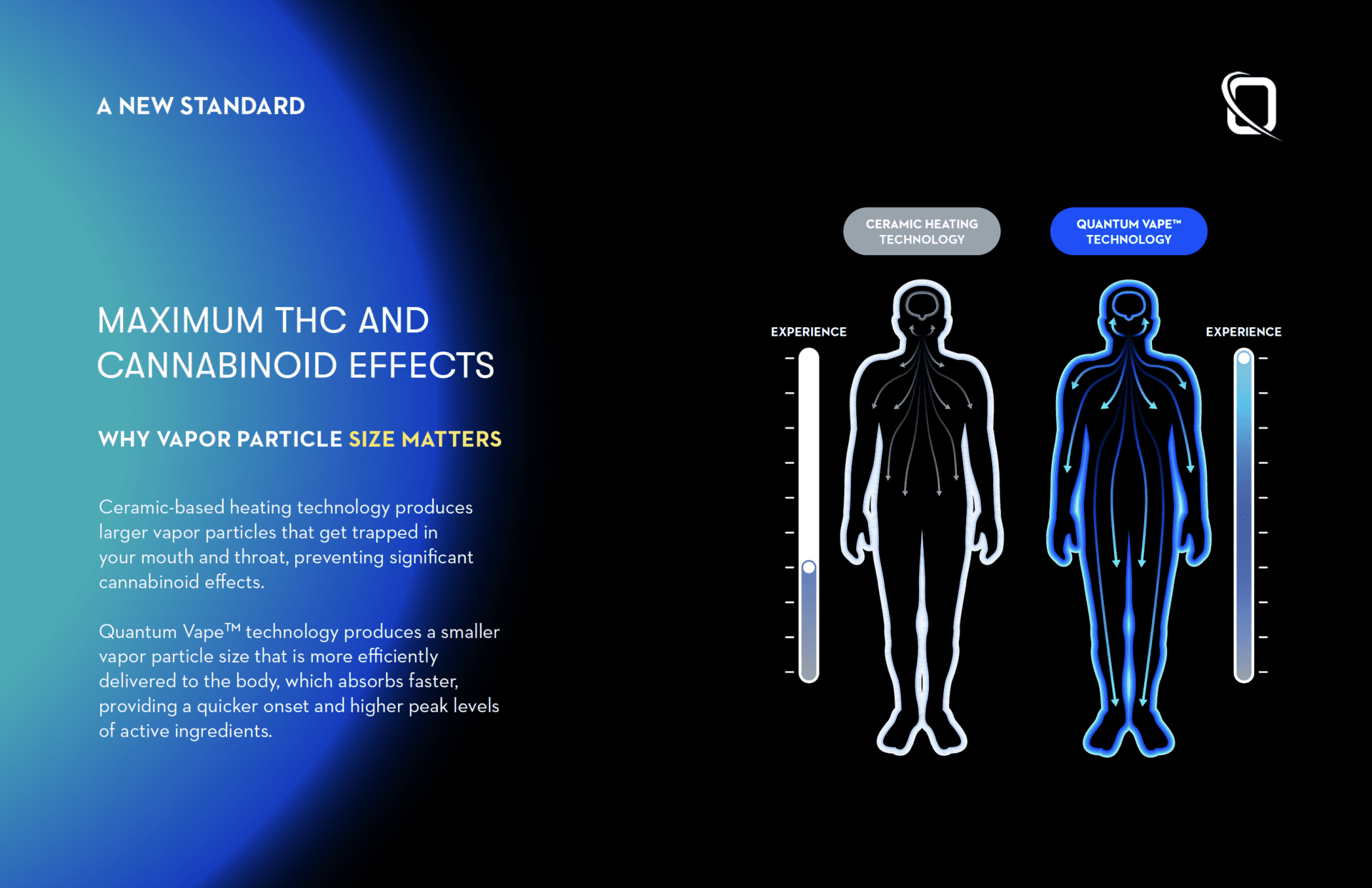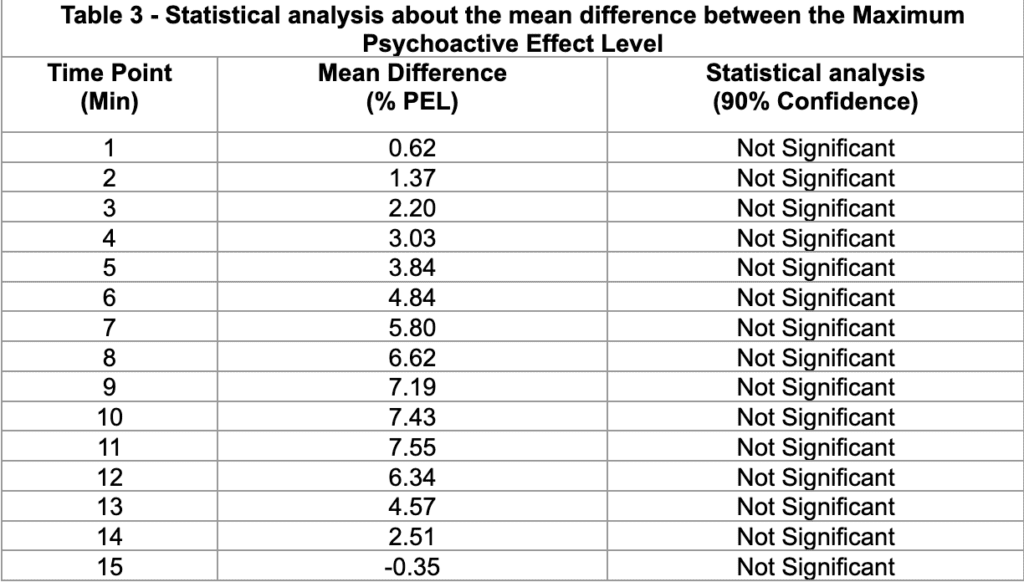Posted by Derek Champoux
1 month ago / March 14, 2024
EEG study quantifying the efficacy of Quantum Vape™ Technology

ORIGINAL SOURCE: ZENTRELA: Scientific Library of Cannabis Effects
Publication CUSIC-27:
EEG study for objectively quantifying the efficacy of Greentank’s Quantum Vape™ Technology to create cannabis psychoactive effects.
Introduction
Vaporizer technology has revolutionized the way people consume substances like nicotine, herbs, and cannabis. Unlike traditional methods of smoking, which involve combustion, vaporizers heat materials to a temperature where they release their active compounds as vapor, without creating smoke.
Amidst a rapidly growing interest in health-conscious consumption, vaporizer technology has undergone significant evolution over the past two decades. From the rudimentary wick heating method prevalent in the early 2000s, advancements in heating technologies, such as mesh and ceramic, emerged as more efficacious alternatives between 2010 and 2017 and continue to be prevalent in most vaporizer technologies today.
In February 2024, Greentank Technologies introduced Quantum Vape™, a new vape heating innovation with a proprietary microfluidic design. This pioneering technology utilizes biocompatible materials, diverging from conventional metal or ceramic components, to enhance the flavor, potency, and consistency of the overall vaping experience.
To objectively validate the efficacy of the Quantum Vape™ Technology to vaporize a live rosin extract with 85.274% THC and deliver its intended effect, Greentank collaborated with the neurotech company Zentrela, Inc. to study the brainwaves (EEG) of research participants that consumed a specific cannabis vape product (510 cartridge). This investigation aimed to objectively characterize the onset time and potency of the cannabis psychoactive experience, by using Quantum Vape™ Technology versus a Ceramic Cell.
The raw EEG data of sixteen participants was collected before and after inhaling the same quantity of the same product. In their first visit they used Quantum Vape™ and in their second visit, they employed a Ceramic Cell. Before sharing the raw EEG data of the two vape technologies to Zentrela, the participant and vape technology identifying information was anonymised and blinded.
Zentrela used its scientifically proven* AI-based EEG analytics method, called Cognalyzer® AI for Cannabis Psychoactivity, version GA56, to characterize the psychoactive effect curves created by both vape technologies. *Peer-reviewed publications: paper 1, paper 2.
The findings of this study provide scientific evidence suggesting a discernible time difference between the Quantum Vape™ Technology and the Ceramic Cell in creating the intended effects of the cartridge for both onset time and time needed to reach peak.
Study Results

Table 1 presents data regarding the psychoactive effects induced by vaporizing the cannabis product using the Quantum Vape™ Technology. The findings indicate that four minutes after inhaling three hits of the cannabis product via Quantum Vape™, participants began to experience its psychoactive effects, with an onset potency of 24.85% PEL.
By the tenth minute after consumption, the group of participants is estimated to have reached the peak of their psychoactive experience, which measured at 40.14% PEL.


Table 2 presents data regarding the psychoactive effects induced by vaporizing the cannabis product using the Ceramic Cell alternative. The findings indicate that five minutes after inhaling three hits of the cannabis product via Ceramic Cell, participants began to experience its psychoactive effects, with an onset potency of 26.33% PEL.
By the fifteenth minute after consumption, the group of participants is estimated to have reached the peak of their psychoactive experience, which measured at 39.28% PEL.


Table 3 shows the minute-by-minute statistical comparative analysis between the PEL of each psychoactive effect curve. The mean difference is the result of subtracting the difference between the Quantum Vape™ PEL minus the Ceramic Cell PEL at each time point.
Conclusion
The results of this AI-based EEG analysis shows that the main significant difference between the two heating technologies was the speed to create the psychoactive effects. Through Quantum Vape™ Technology, study subjects experienced the psychoactive effects of the extract 20% faster than when they inhaled it via Ceramic Cell technology. Furthermore, the maximum experienced psychoactive effect level (Max Peak PEL) created via Quantum Vape™ arrived 33% faster than Ceramic Cell.
A key aspect of this study that is worth highlighting is the demonstrated* objectivity, precision, and consistency in the EEG analysis carried out independently by Zentrela, Inc.. This analysis was aimed at characterizing both the onset time and potency of cannabis-induced psychoactive effects. What sets this method apart is its ability to remove potential subjectivity and bias in gathering cannabis effect data through conventional means like questionnaires. By utilizing portable EEG technology coupled with AI-driven analysis, this approach effectively addresses such concerns. *Peer-reviewed publications: paper 1, paper 2
Additionally, it is crucial to acknowledge that external variables potentially affecting the time it takes for cannabis psychoactive effects to occur were carefully managed to precisely isolate and compare only the heating efficiency of both technologies. It is widely recognized that the formulation of a product (including extraction method, drug delivery technique, infusion of multiple substances, etc.) can greatly influence both the onset time and potency of the product. By inhaling the same quantity of the identical product during both sessions, this variability was reduced to a minimum and effectively controlled.
Filed Under: Education
Recent Posts
- The Science Behind Quantum Vape: Revolutionizing Vaping with Chip Technology
- Vape Safety: Future-Proofing Your Brand with Quantum Vape
- EEG study quantifying the efficacy of Quantum Vape™ Technology
- Introducing Quantum Vape: The Next Evolution in Vape Technology
- Greentank’s Unforgettable Journey at MJBizCon 2023: Innovation and Connections
Join our awesome community
Keep up to date on all Greentank Technology news and promotions
Interested in our products?
Contact us to find out how you can carry the most reliable vape hardware solutions on the market.
General Requests
Logistics

